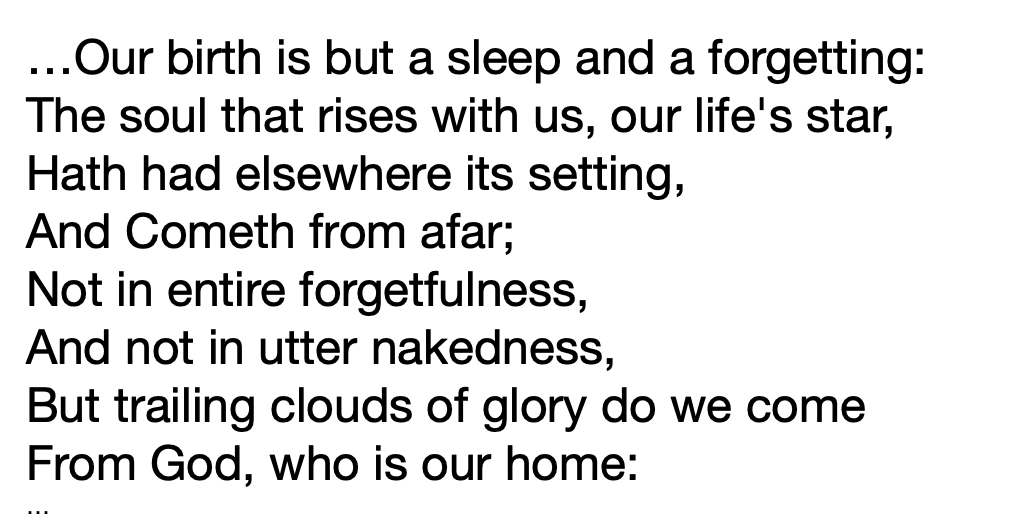Bruce Greyson, M.D., a psychiatrist, wrote a book about NDEs, or Near Death Experiences. Jason handed it to me. He said, “You might want to read this.” I looked at the Acknowledgements first. Bruce wrote, ‘“I then ran every word by my talented collaborator Jason Buchholz, who showed me how to bring the story alive and turn the book that I wanted to write into one that others might want to read.” Oh, so that’s why he had it. But that’s not why he wanted me to read it.
It began a half century ago when Holly, a college student who deliberately overdosed, was driven to the ER by her roomate, Susan. While Holly was still groggy and sleepy, Bruce and Susan left the ER, walked to the end of the corridor and carried on a conversation. The next day Bruce returned and mentioned to Holly that he had talked to Susan the previous night. “I know,” Holly said, “I saw you.” Holly recalled the questions Bruce asked and the answers Susan provided, then followed by mentioning that he (Dr. Greyson) was wearing the same tie he had on the previous night, and that it had a red stain on it, which it did because he had spilled spaghetti on it, a fact that wouldn’t have been possible for Holly to have known.
And thus began an intern’s (and soon to become a full-fledged doc) fifty year search to find, interview, and discuss what is now known as “near death experiences” from “experiencers”, people who have demonstrated truths that can’t be explained. After undergoing open heart surgery a patient described the surgeon shortly before he began to operate. “He stood at the end of the gurney, then began flapping his arms,” he said. He then asked, “and why were surgeons messing with my leg?” Yes, the surgeon, a Buddhist, admitted that he “flapped his arms before surgery” as he thought that it might expunge his surgical gown from any germs or bacteria, and the doctors messing with his leg?” They were stripping a vein out of his leg to be used to create a bypass graft for his heart. The patient was fully anesthetized and his eyes were taped shut so he couldn’t blink. He shouldn’t have been able to see anything. And yet he did. He saw it all. From the ceiling. The Buddhist surgeon affirmed the arm flapping part, then added, “I’m a Buddhist. There are things we don’t understand.”
Greyson’s colleagues were skeptical. Without scientific evidence his interviews were anecdotal, insufficient. Greyson remarked, “You can sweep these things under the carpet for only so long; at some point the furniture begins to topple over.” Despite trying to engineer these experiences by placing an unfamiliar “target” in the operating room, hoping that a heart patient might, when he was under an anesthetic, remember or take note of it. It didn’t happen.
Two parts resonated with me. First, Greyson clearly identifies that although the brain and the mind need each other, they are different from each other, too. For many of the experiencers, the mind continued even when the heart and brain waves flat-lined. It is unclear just how the two are connected, how they work with each other, but if there really is something to these experiences, then it’s notable that the mind continues independently of the brain. Second, almost all the experiences focus on light and love. People describe going through tunnels, becoming overwhelmed by brilliant light, appearing in a dimension where they feel overwhelming love—for themselves and outwardly for others. Traditional religions are subjugated by this love, as these near death experiences affected atheists, agnostics, Christians, and all others equally. No Jesus. No bearded deity on a golden throne. No Allah. Atheists began to believe something. Many who approached death’s door and returned lost their fear of dying. In almost all cases, experiencers’ lives changed immediately after the NDE, and all for the better.
I’ve never believed in heaven or hell. It’s comforting and affirming, though, to think that something continues. I remember an image that I picked up in a college class. A bird flying through the night flies into an open window in a house, then flies out another window. The house is our life here on earth. The bird is our soul, our mind, or the part of us that existed before we were born and remains after we die.
Greyson met the Dalai Lama who told him “about the difference between Western science and Buddhism. Both disciplines, he argued, are based on observation and logical deduction, and both give experience precedence over belief in their quest for the truth, But he added, "Western scientists seem to seek understanding about how the world works in order to change and control the natural world. This is the goal of most scientists—to gain mastery over our environment. Buddhists, on the other hand see understanding about how the world works in order to live more harmoniously with it. In other words, the goal of Buddhism is to coexist with nature rather than gain mastery over it, in order to reduce our suffering.”
I sent this blog to one of my high school English teachers, (Yes, we’re all still here), and she said it reminded her of lines she memorized in high school, a part of Wordsworth’s “Intimations of Immortality.”
